
The Curonian Spit (Lithuanian name: Kuršiū nerija, German name: Kurische Nehrung) is a national park whose territory belongs to two states: Russia and Lithuania.
The Curonian Spit is included in the UNESCO World Heritage List.
The total length of the Curonian Spit is 98 kilometers, of which about 48 kilometers (the southwestern part of the spit) belongs to Russia (the Kaliningrad region) and 50 kilometers to Lithuania.
On the one hand, the Curonian Spit is washed by the fresh waters of the Curonian Bay, and on the other-by the salty Baltic Sea.
This article will focus on the Curonian Spit of Russia, whose full official name is: The Curonian Spit National Park.
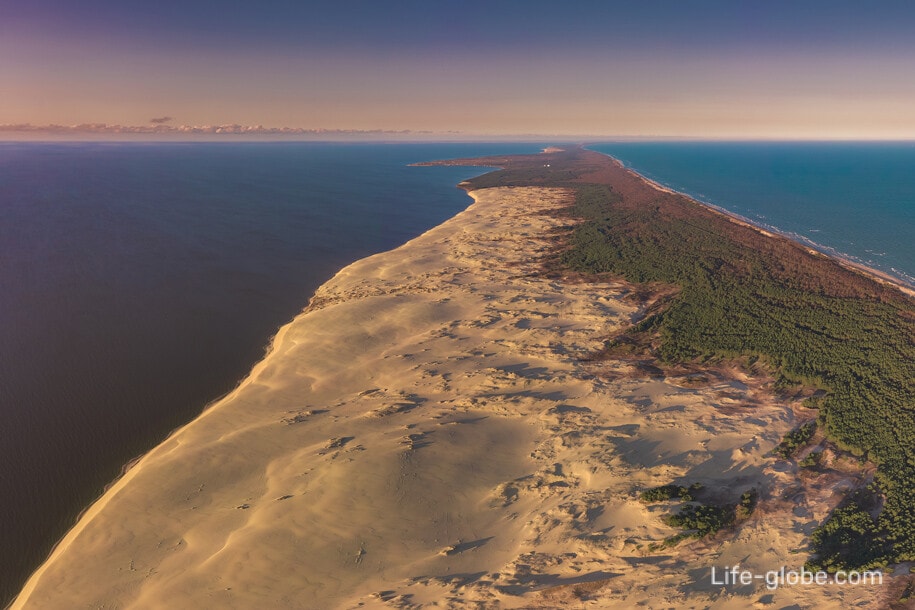
The formation of the spit began no later than 7 thousand years ago, when moraine islands and shoals left after the melting of the glacier became a place of deposition of sand deposits brought by sea currents, which formed the body of the spit-the northern and southern parts, which later joined into a single strip of land. As the body of the spit grew, the separation of the Curonian Lagoon from the open sea increased, which eventually led to the transformation of the bay into a freshwater reservoir.
The relief of the spit was created by the wind, bringing sand dunes of various shapes and sizes, and the humid and warm ancient climate, and, subsequently, the efforts of people, contributed to the development of vegetation cover, which fixed mobile sand dunes.
Initially and since ancient times, the indigenous people who inhabited the Curonian Spit in the 11-13 centuries and gave the name to the spit were the Curonians - one of the Western Baltic tribes. Like the Prussians who lived further south, on the Sambian Peninsula, the Curonians were pagans.
In the 13th-14th centuries, castles that have not survived to this day were erected by the Teutonic Knights in the current villages of Rybachy and Morskoye.
Since the 16th century, the spit has become a favorite place for royal hunting of elk and red deer. In order to preserve the hunting resources of the spit from poachers, at the beginning of the 18th century, the Royal Forest Reserve was organized in the root part of the peninsula by decree of King Frederick William I.
Today, the Curonian Spit is one of the oldest and smallest national parks in Russia.
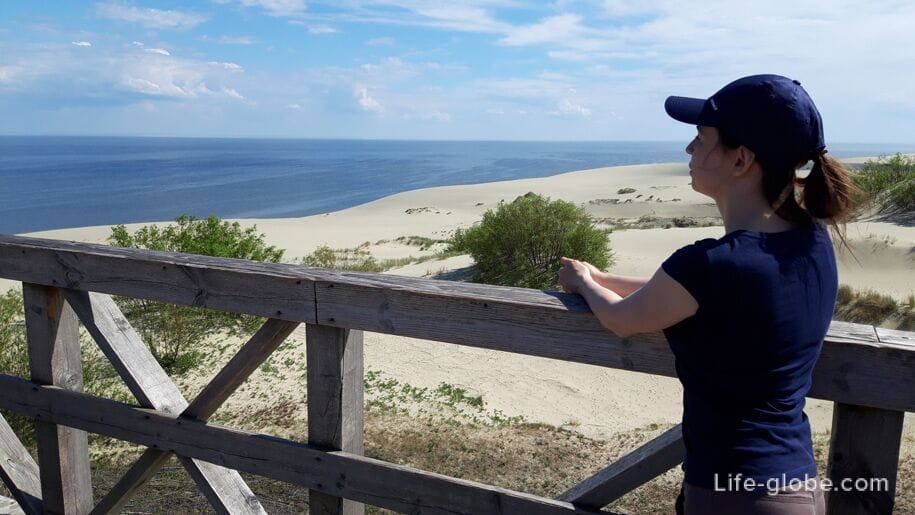
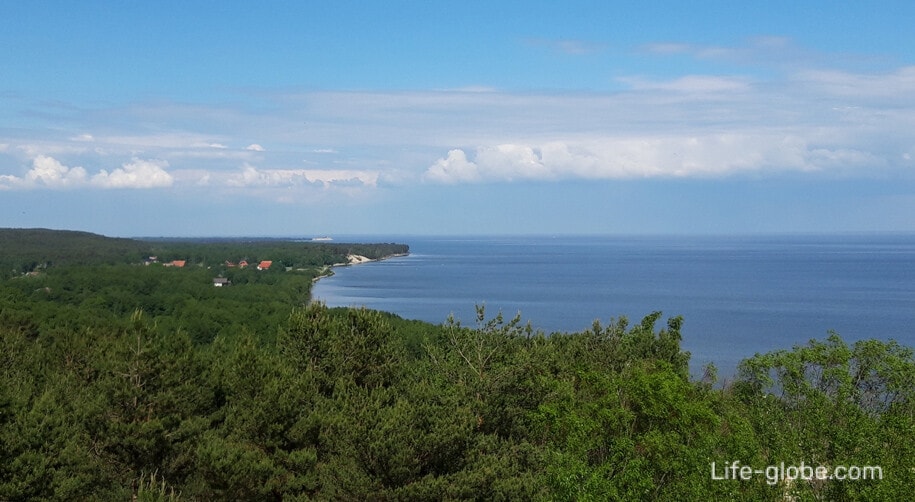
The national Park "Curonian Spit" is located in the Zelenograd district of the Kaliningrad region. The nearest resort town to the spit is Zelenogradsk.
The Curonian Spit is a long and narrow (the width of the spit varies from 350 meters to 3.8 kilometers) saber-shaped strip of land, which is washed from the east by the freshwater Curonian Bay, and from the west by the salty Baltic Sea.
The narrow strip of land between the sea and the bay presents a variety of diverse and changeable natural ecosystems: dunes, sandy beaches of the sea and the bay, lakes, meadows, swamps, as well as spruce, pine and deciduous forests.
In addition to natural attractions on the Curonian Spit, there are lighthouses, equipped beaches and three small residential villages (Lesnoy, Rybachy and Morskoye), where cafes, shops are located and there are accommodation facilities (hotels, apartments, houses, recreation centers)
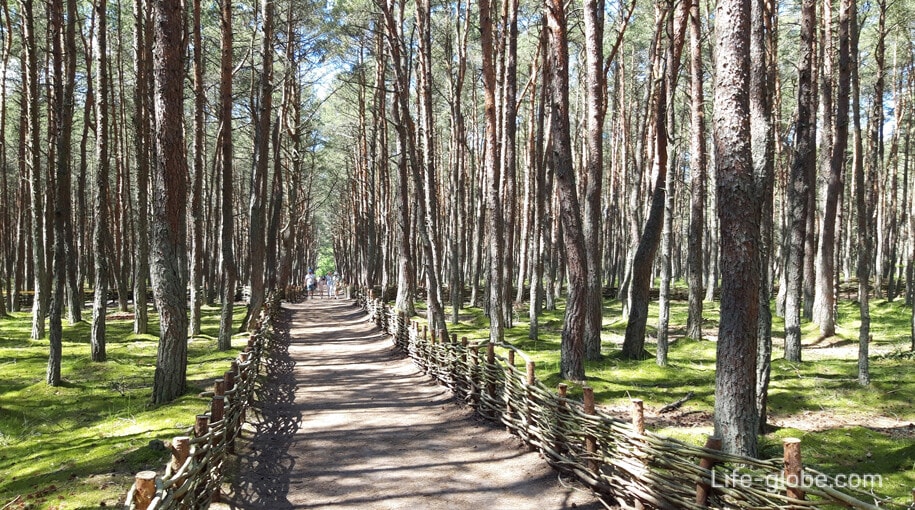
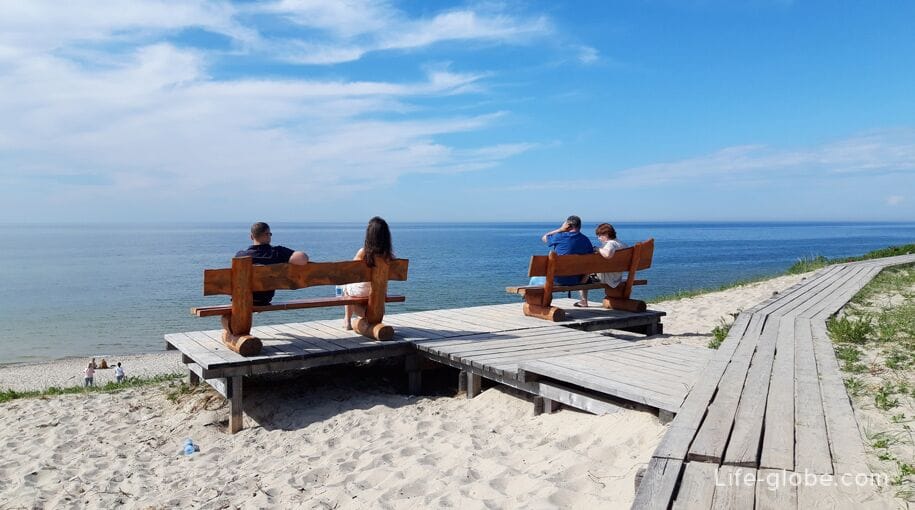
The Curonian Spit Park is open all year round.
The best time to visit the Curonian Spit National Park is September-October. Autumn on the Curonian Spit is usually warm and mostly sunny weather until mid-October.
You can visit the Curonian Spit both independently and with one of the excursions from the cities of the Kaliningrad region.
You can get to the spit yourself by taxi or car from anywhere in the Kaliningrad region, as well as by public buses from the center of Kaliningrad, from Zelenogradsk and Svetlogorsk (including Otradnoye and Pionerskiy resort).
It is most convenient to move along the spit by car. Near all the attractions there are places where you can park your car. You can also travel along the spit on bicycles, which can be rented in the villages of the spit, as well as in Zelenogradsk.
The visit to the spit is paid. You can pay for a visit to the spit on the spot (at the checkpoint located on the side of Zelenogradsk) or in advance online on the official website. When traveling to Kos by bus, only a bus ticket is paid. We recommend that you check the rates and benefits on the official website of the park (the site is listed at the end of this article).
More information about all the ways to get to the Curonian Spit, about the entrance to the spit and how to move along it, can be found here →
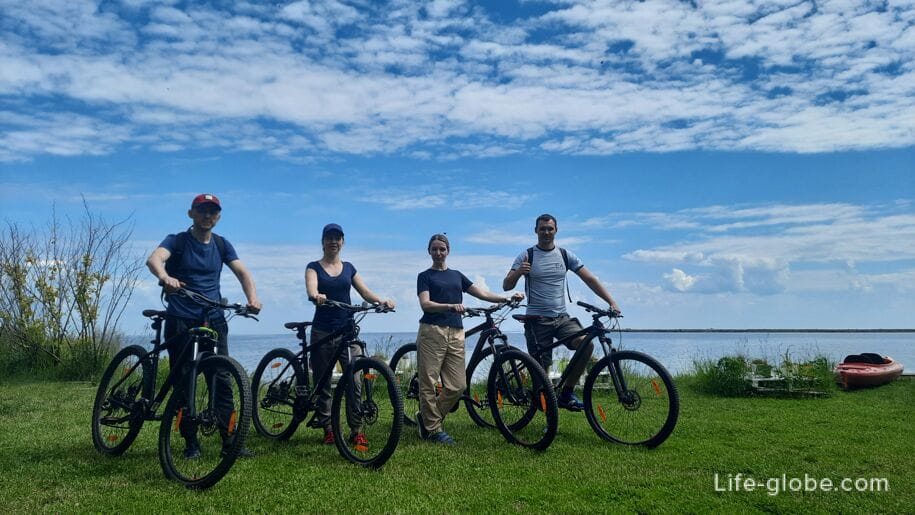
You can visit the Curonian Spit for free along the sandy coast along the Baltic Sea. Learn more about walking on the spit from Zelenogradsk to the village of Lesnoy...
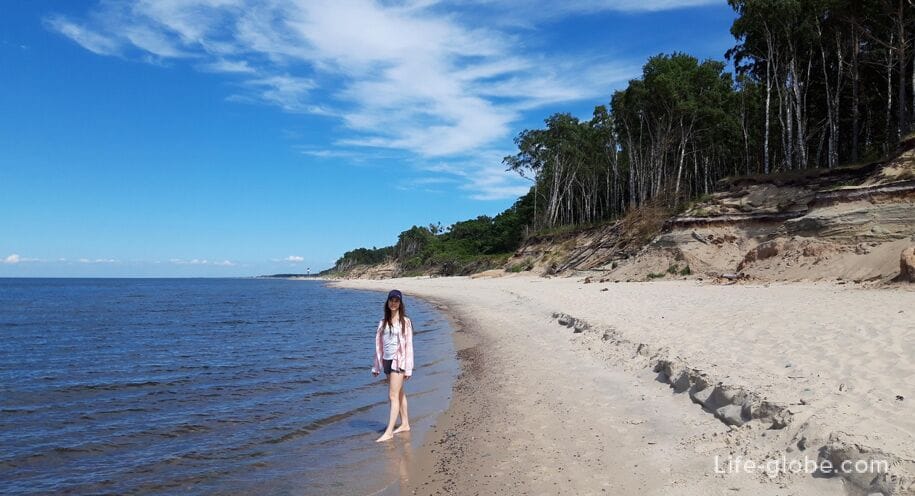
You can also visit the Curonian Spit, including its sights, with an excursion
Excursions to the Curonian Spit from Kaliningrad
Excursions to the Curonian Spit from Svetlogorsk
Excursions to the Curonian Spit from Zelenogradsk
For those who want to stay on the territory of the National Park, get to know its sights better, as well as relax in a relaxing and peaceful atmosphere, away from the hustle and bustle of cities, there are three residential villages on the Curonian Spit: Lesnoy, Rybachy and Morskoye, where there are cafes and shops, bicycle rentals, exits to the Curonian Bay and the Baltic Sea, as well as accommodation facilities (hotels, apartments, houses, recreation centers) located both directly in the settlements themselves and near them.
The total area of the settlements is 461 hectares. The total population of the settlements is 1,558 people.
Lesnoy is the first settlement of the Curonian Spit, relative to the city of Zelenogradsk, located at the narrowest point of the spit (350 meters).
In the village of Lesnoy on the Baltic Sea there is an official beach with infrastructure and a promenadeis equipped .
Right next to the sea shore, the 3-star Mayakovsky Design Hotel offers a Russian steam bath, seasonal indoor and outdoor pools, free parking and rooms with free Wi-Fi. This hotel is considered one of the best on Kos. Link to the hotel
Learn more about the village of Lesnoy...
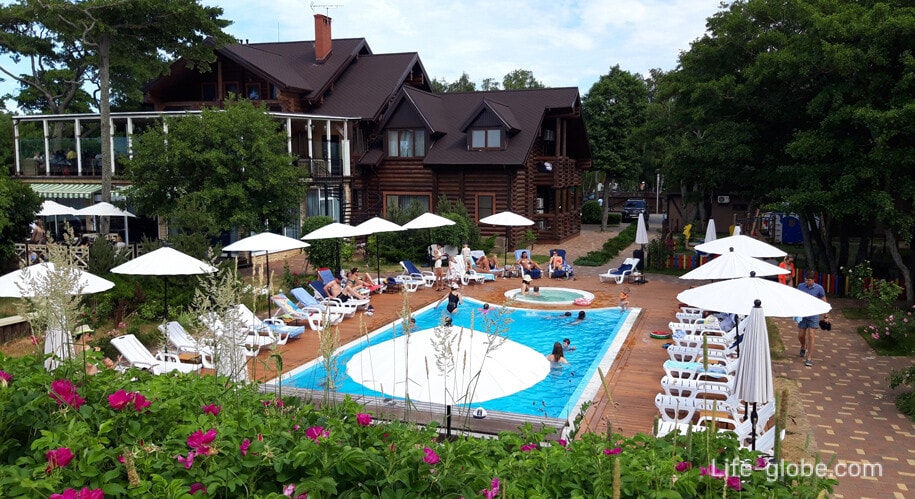
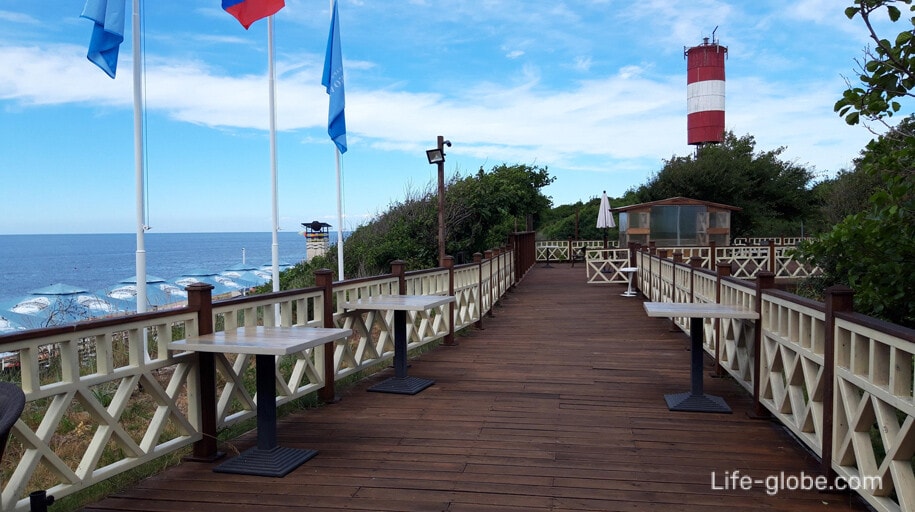
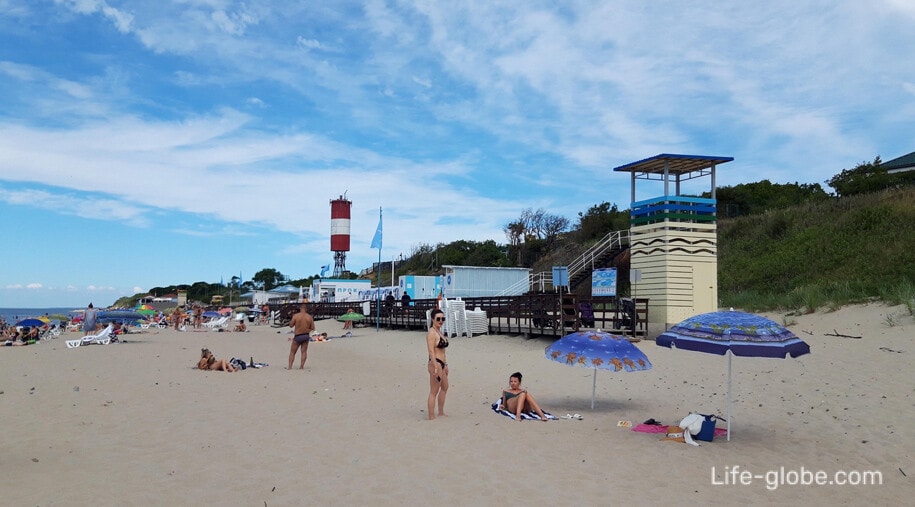
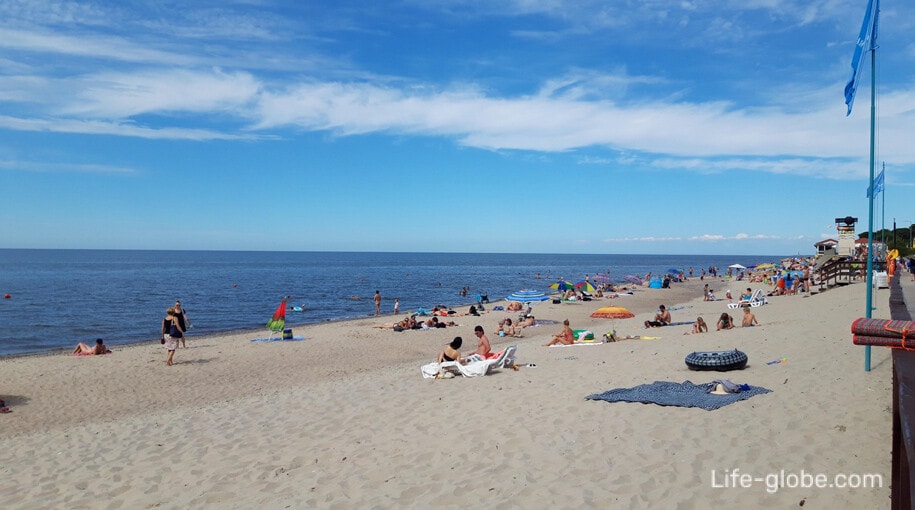

The village of Rybachy is the central settlement of the Curonian Spit and is located in the widest part of the Russian part of the spit, reaching 3.8 kilometers.
This village is considered the most convenient for accommodating those vacationers who want to visit the sights of the Curonian Spit on their own.
In the village there is a hotel with a beautiful well-groomed territory with a restaurant, hammocks for relaxation and a small beach on the Curonian Lagoon - this is the 3-star Altrimo hotel.
The hotelhas a swimming pool, a Russian bath with a font, bicycle rental and equipment for water activities in the Curonian Lagoon (boards with a paddle for SUP-surfing, kayaks, kayaks and yachts).
Breakfast is included in the room rate. Link to the hotel
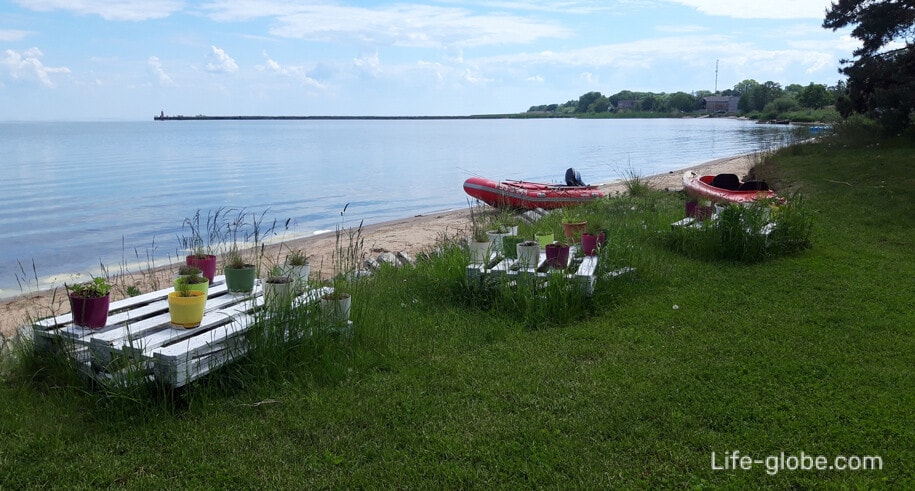
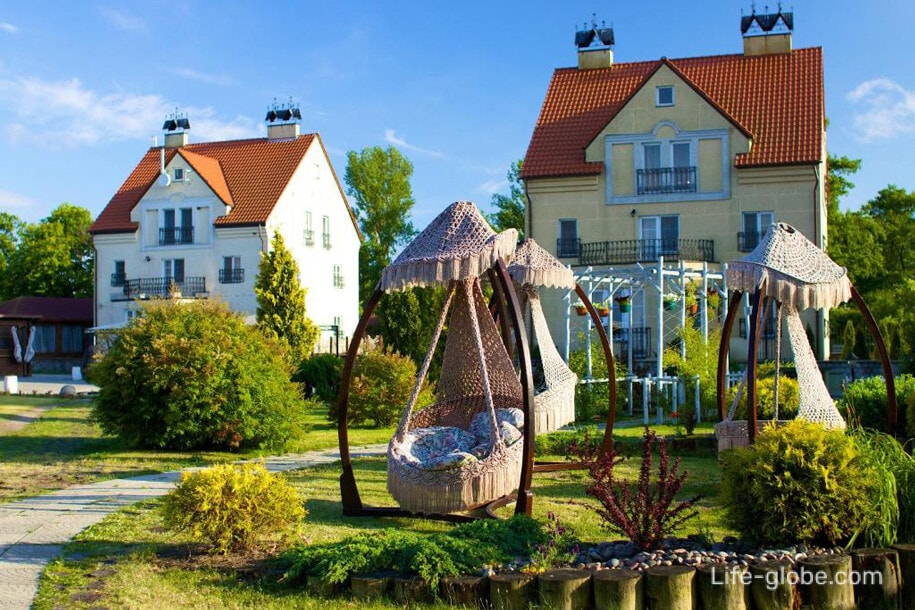
The village of Morskoye is the last of the settlements of the Curonian Spit of Russia, located near the Russia-Lithuania border.
The village is separated from the Curonian Lagoon by a lagoon with a sand spit.
There is an exit to the Baltic Sea from the village; there are cafes nearby.
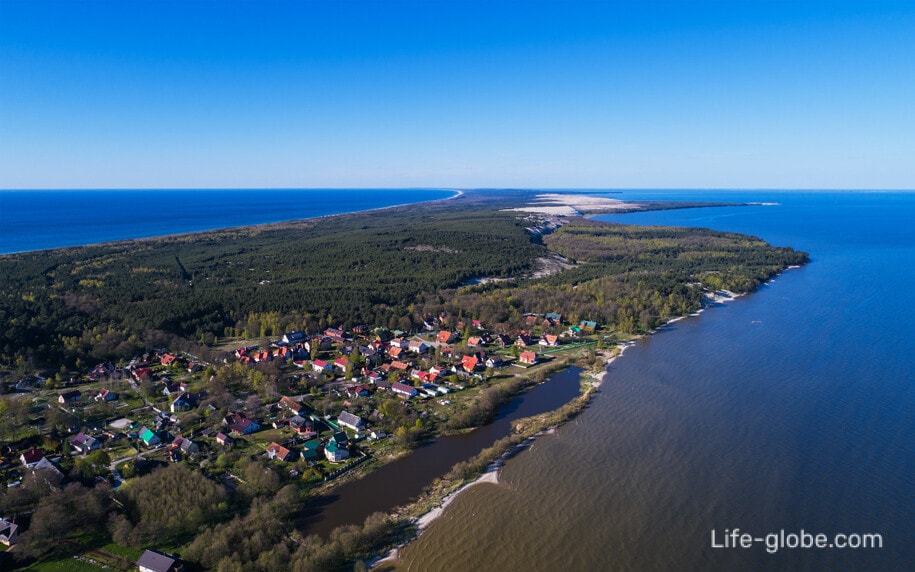
In addition to these, villas, holiday homes, guest houses, recreation centers and apartments are offered in the villages and near them to accommodate vacationers.
All accommodation facilities in the village of Lesnoy can be viewed and booked here
All accommodation facilities in the village of Rybachy can be viewed and booked here
All accommodation facilities in the village of Morskoye can be viewed and booked here
The Curonian Lagoon is a lagoon in the shape of a triangle. The average depth of the bay is 3.7 meters. In its wide southern part there are extensive depressions up to 6 meters deep, and in the northern part - depths do not exceed 2 meters. The amount of water that flows from the rivers to the bay per year is 3.5 times higher than its total volume. The water level in the bay is on average 12 centimeters higher than in the sea. Fresh water from the bay constantly flows through a narrow strait into the Baltic Sea.
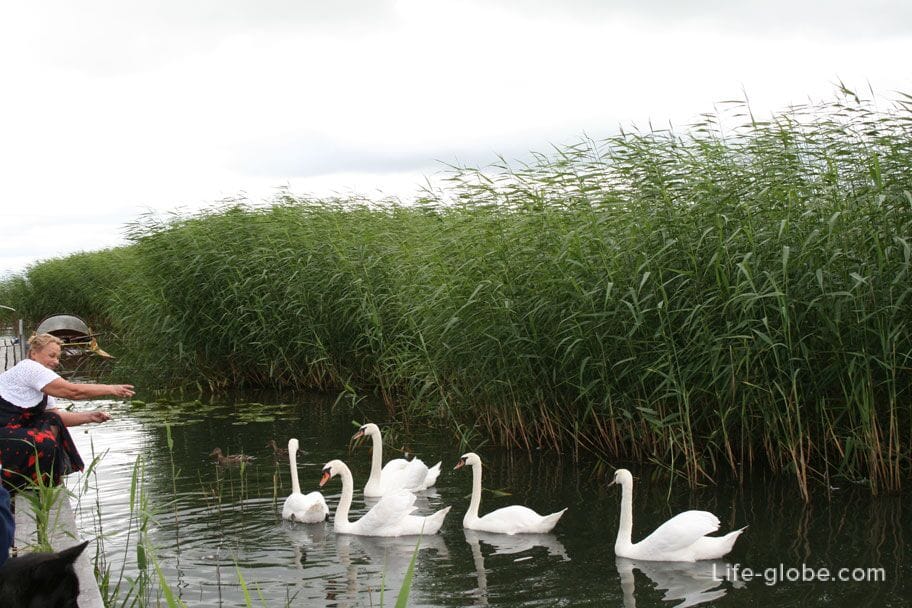
Both on the coast of the sea and the bay there are beaches.
The water in the bay is warmer and warms up faster than the sea. Swimming in the bay begins in June. There are practically no beaches in the bay, since the soils here are mostly swampy.
An asphalt road runs along the entire Curonian Spit, which is convenient for movement.
You can get to the coast of the Baltic Sea, which is a long sandy spit, from the road along the trails. There are quite a lot of exits.
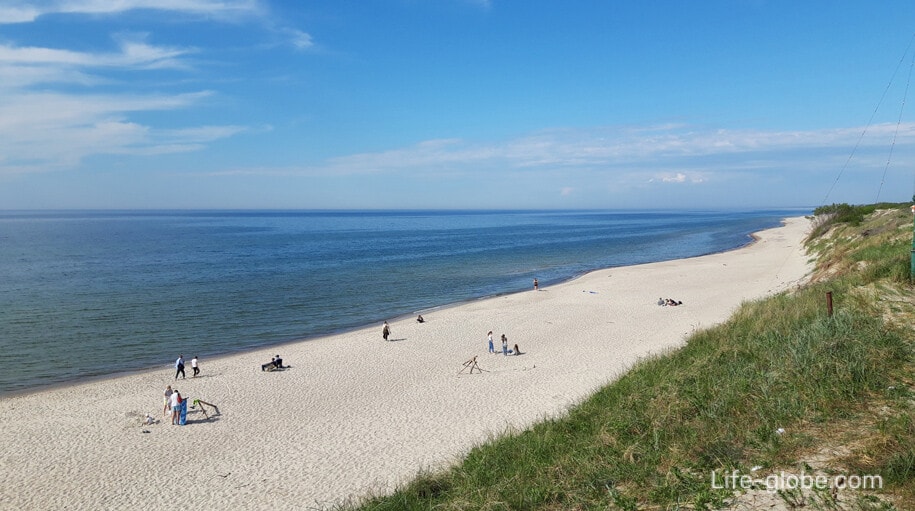
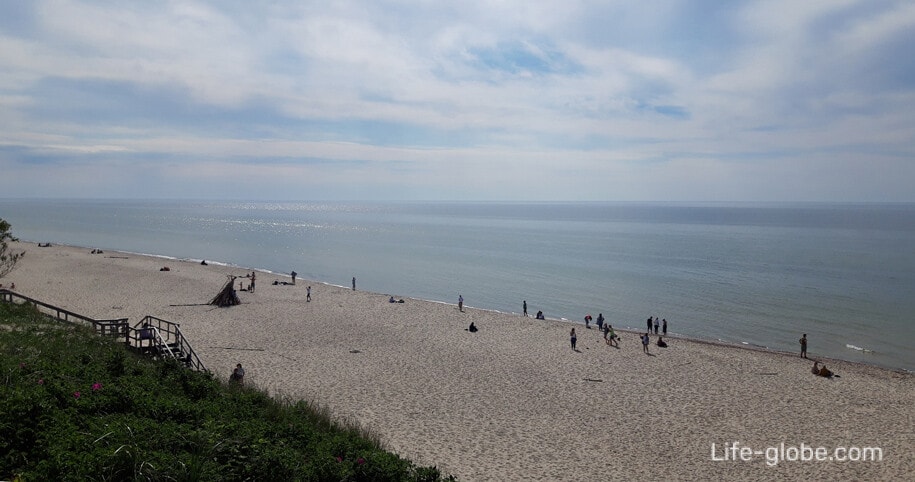
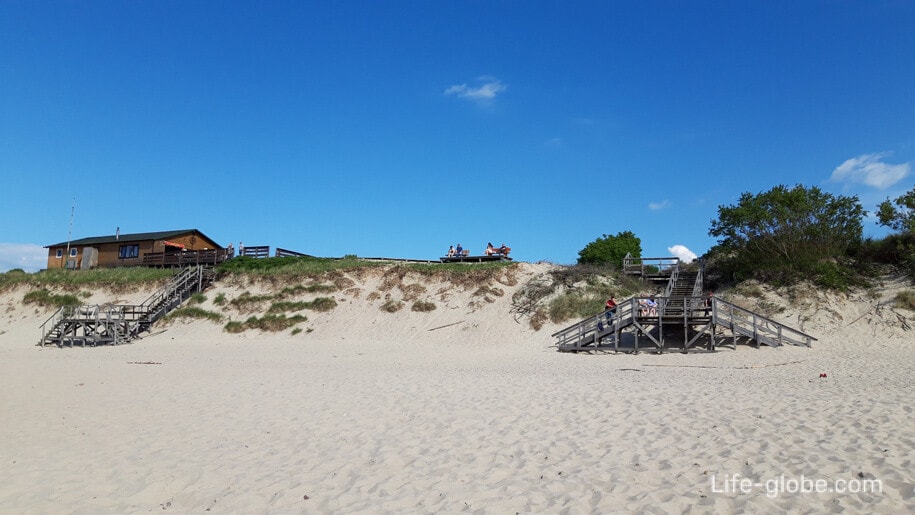
The largest lake of the spit is Lake Chaika, located in the vicinity of the village of Rybachy. The second largest lake of the Curonian Spit is Lake Swan, located 2 kilometers north of the village of Morskoye.
Lake Chaika is a semi-closed forest lake with thickets of reeds and cattails. The bottom of the lake is covered with silt, which comes to the surface near the western swampy shore in dry years. In the eastern part of the lake, the thickness of the silt layer decreases, sometimes exposing sand.
The lake is rich in fish. There are viewing platforms on the lake.
Lake Chaika is located on the 32nd kilometer of the spit.
Coordinates of Lake Chaika: 55°09'03.3"N 20°49'14.4"E (55.150929, 20.820655).
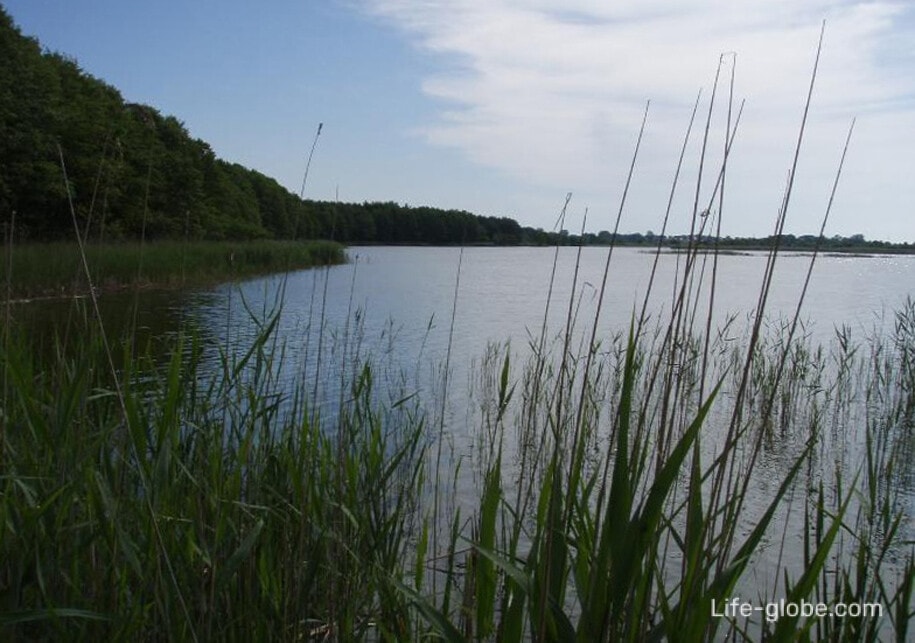
Swan Lake is not only the most picturesque lake of the Curonian Spit, but also unique, since it is the only reservoir of Aeolian origin on the spit, which appeared relatively recently in the small bay.
The lake is located on the ghost plain of the Curonian Spit Bay, at the foot of the dune ridge and is separated from the bay by a thin strip of land, and is surrounded by a moist alder forest.
The name "Swan" was given to the lake because it is home to waterfowl: sibilant swans, as well as coot ducks, chomgi, mallards and gray herons.
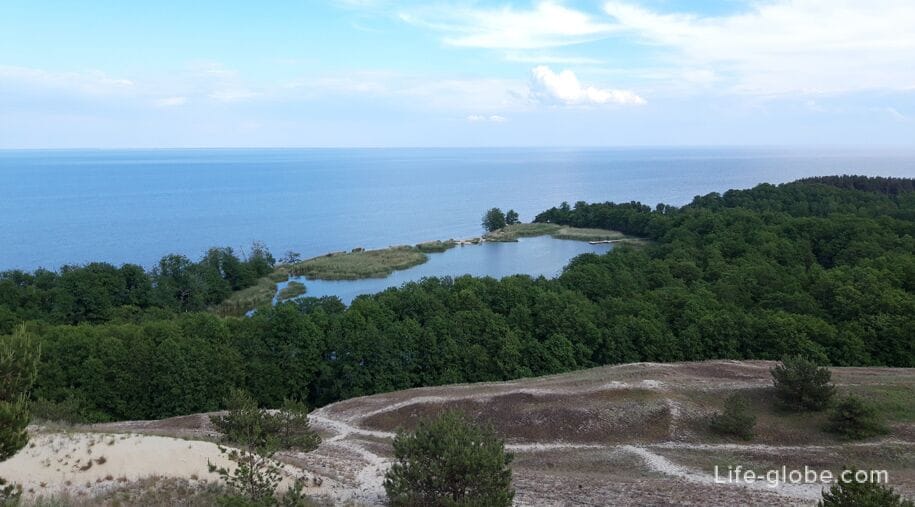
The main attractions of the Curonian Spit are natural, some of which were created by the efforts of people, but, one way or another, they are still natural objects to which and along which there are tourist trails.
Some attractions (routes) of the spit have viewing platforms, such as: Muller height, Efa height and the route to Lake Swan; while others, to a greater extent, run through flat forest areas, - Royal Forest, Rossitten Forest and the famous Dancing Forest.
Also on the spit there is a visit center, a museum complex and a bird banding station "Fringilla".
It is easy to navigate the spit by following the signs. Tourist trails are equipped with information boards.
For the convenience of independent travel on the spit, you can use a personal guide to the national park, which is a software (application) for iPhone/iPad, as well as Android-based devices. After installation on a personal device, the application does not require an Internet connection or cellular communication, it works completely independently. You can check the information on the park's website, which is listed at the end of this article.
More information about all the sights, routes and viewing platforms of the Curonian Spit, with photos, location and coordinates, can be found here →
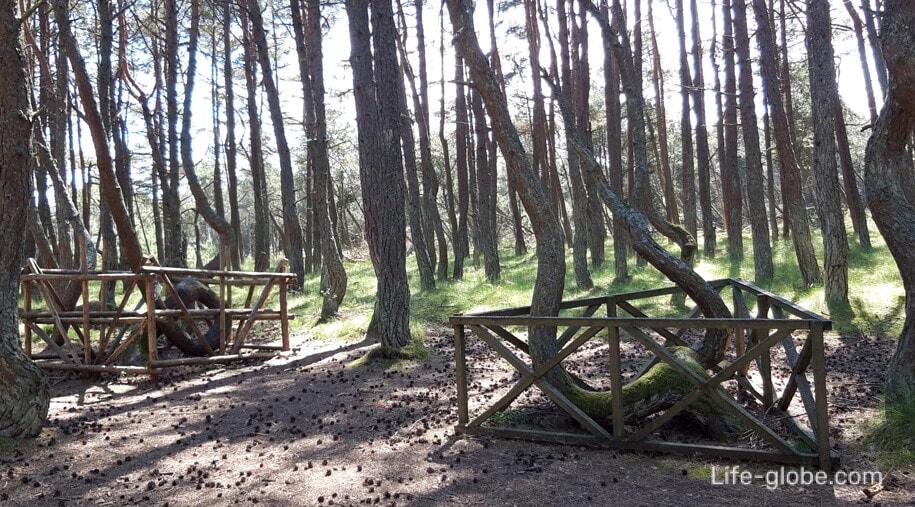
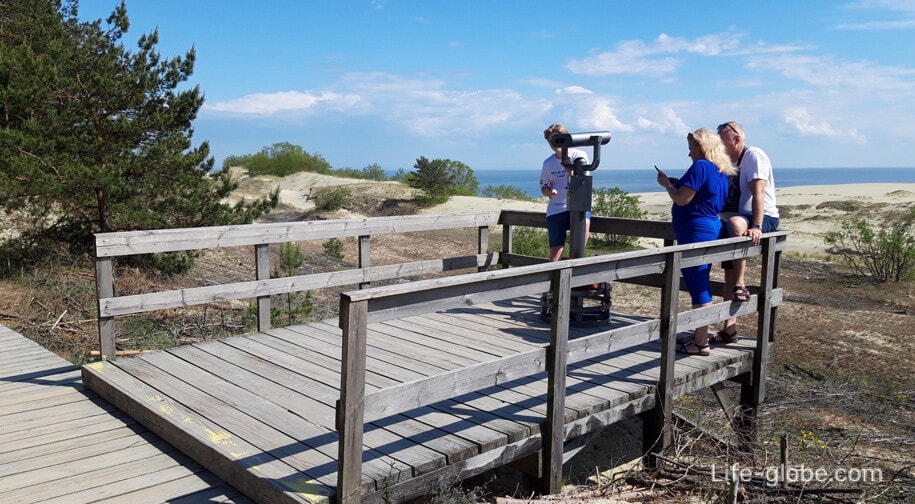
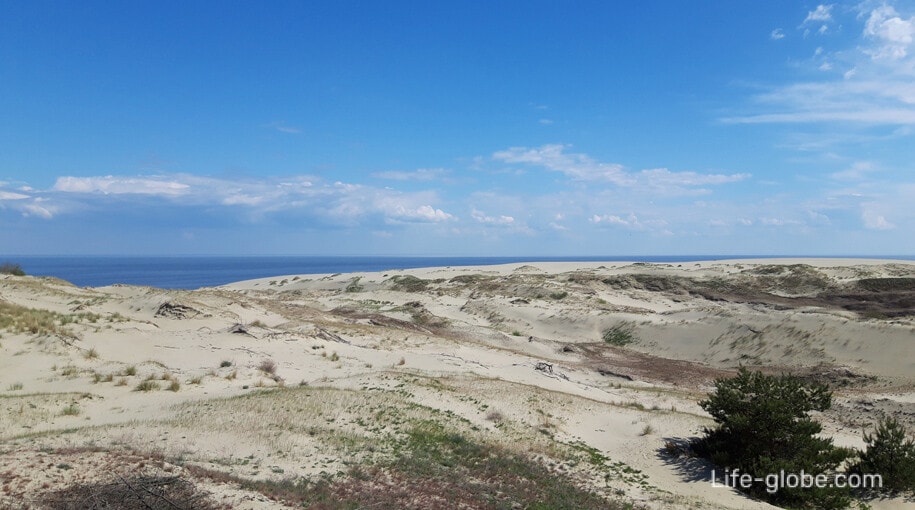
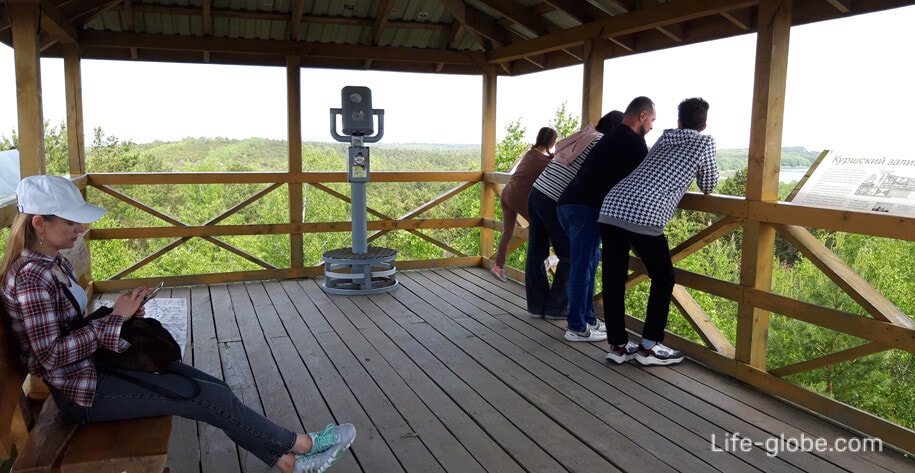
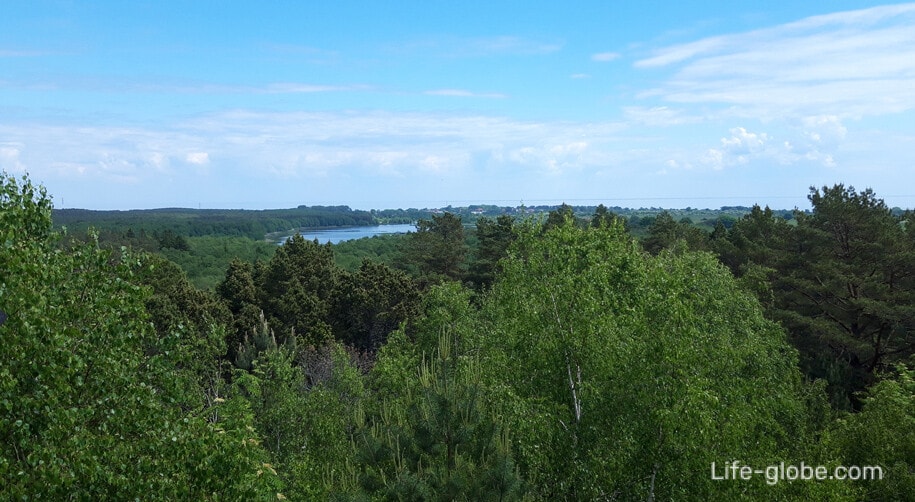
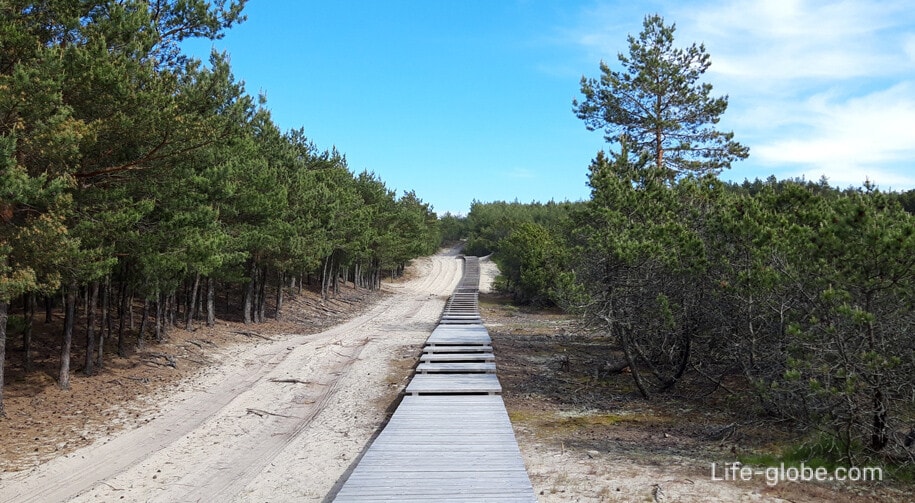
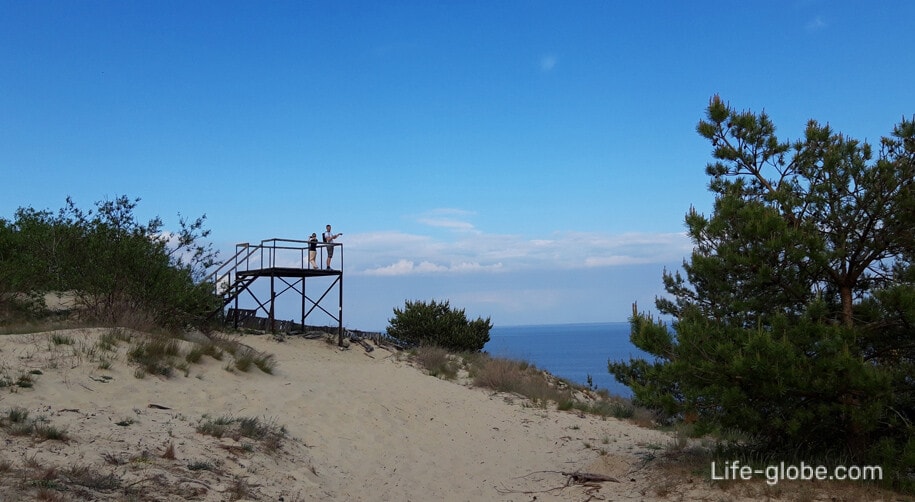
Website: park-kosa.